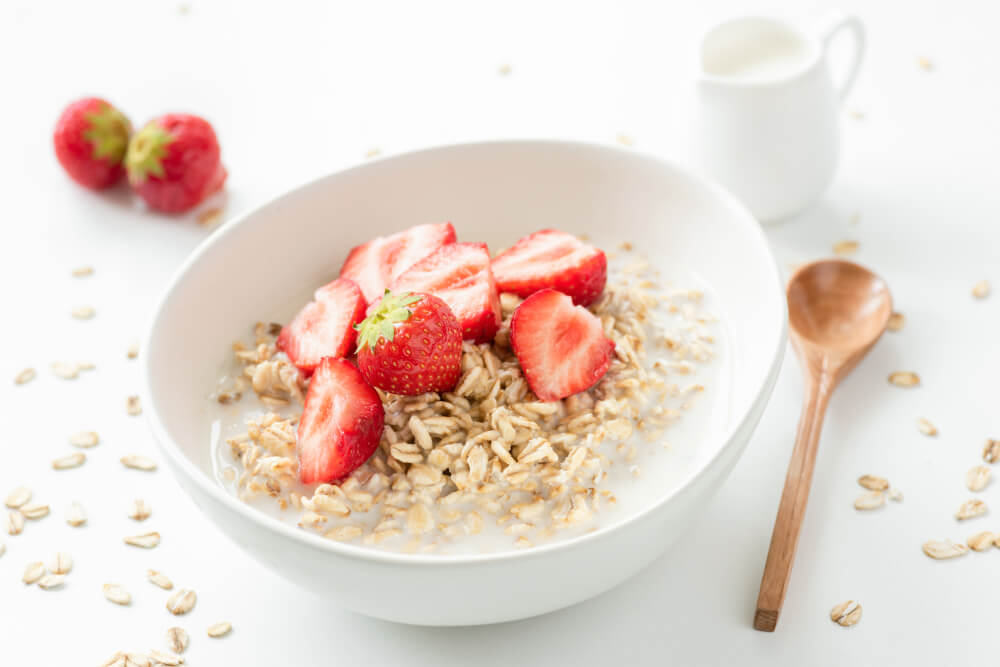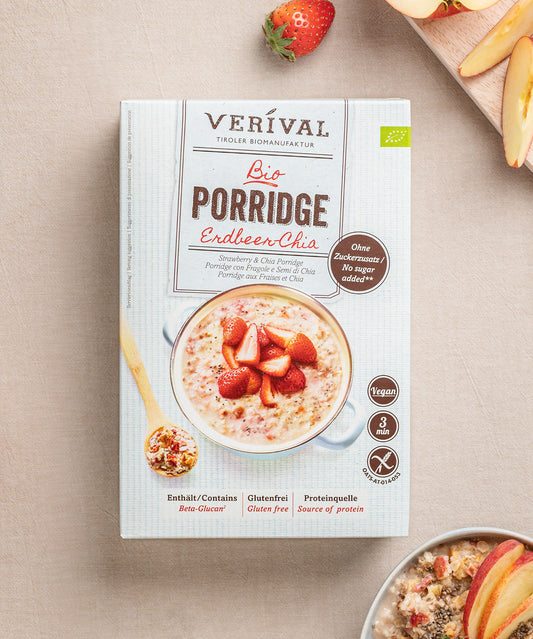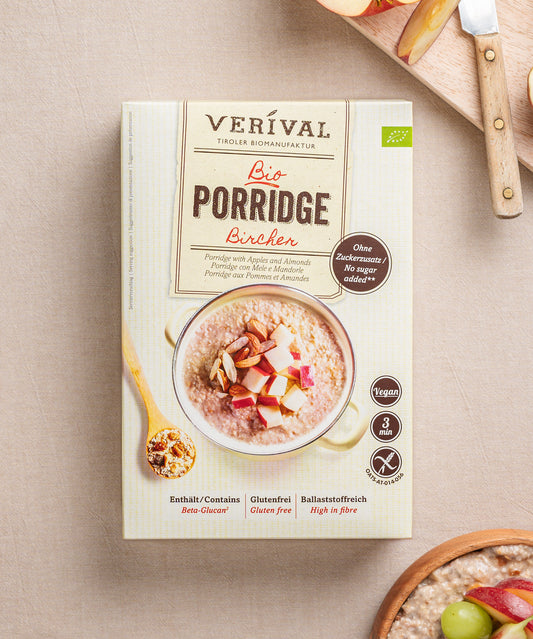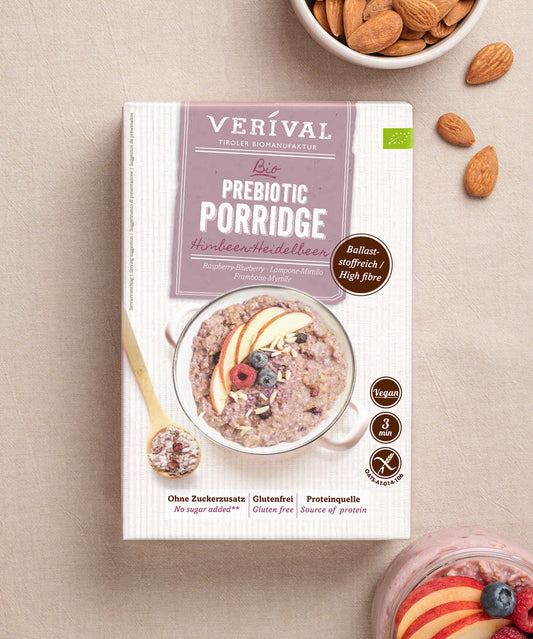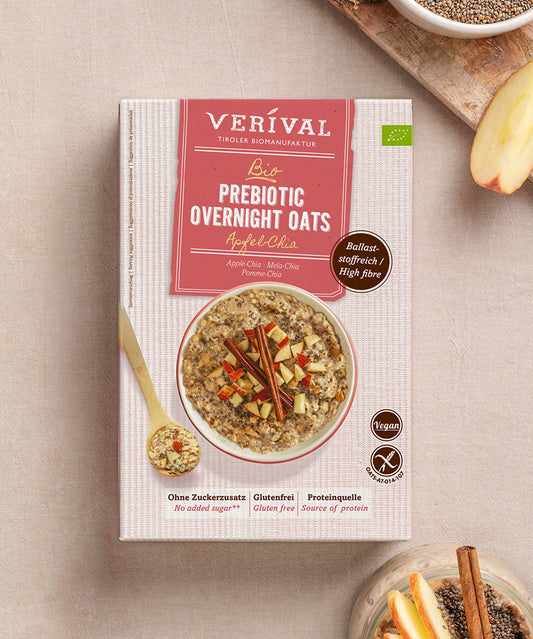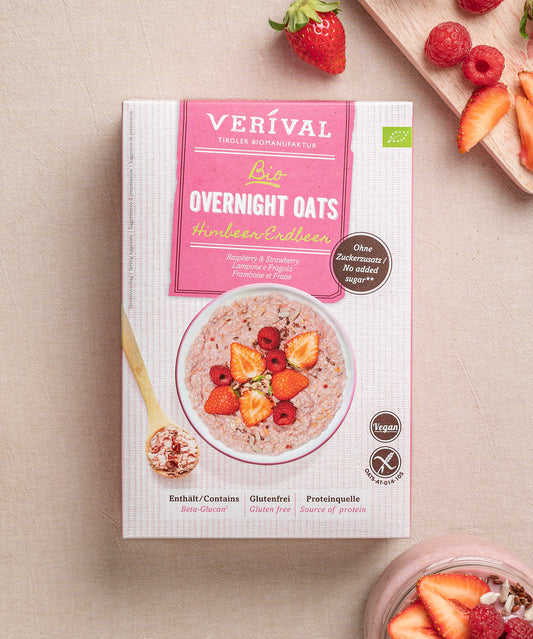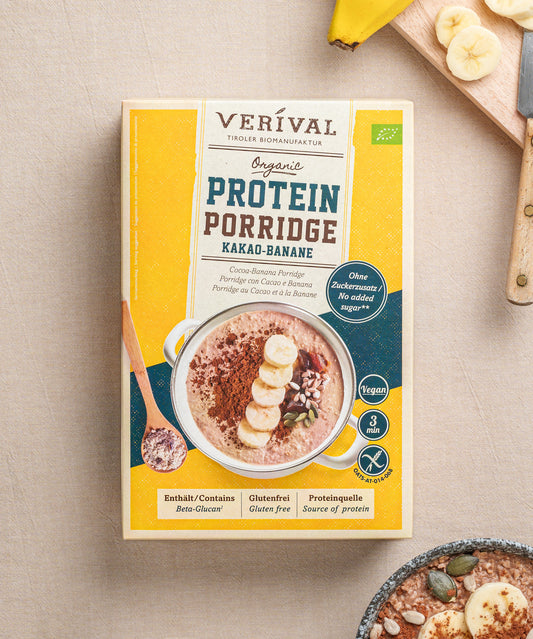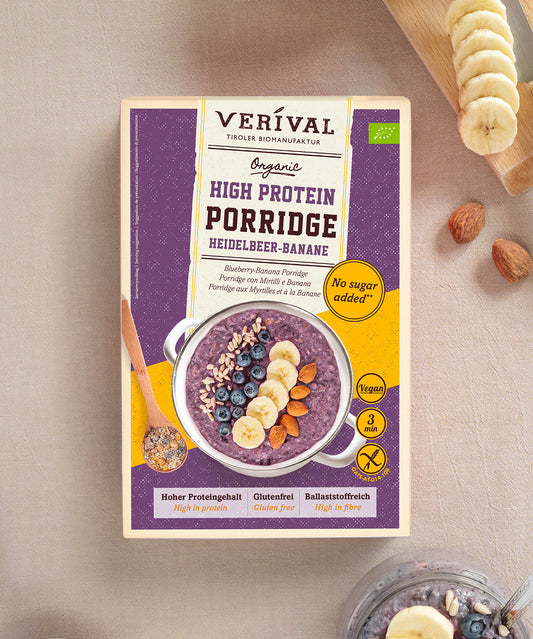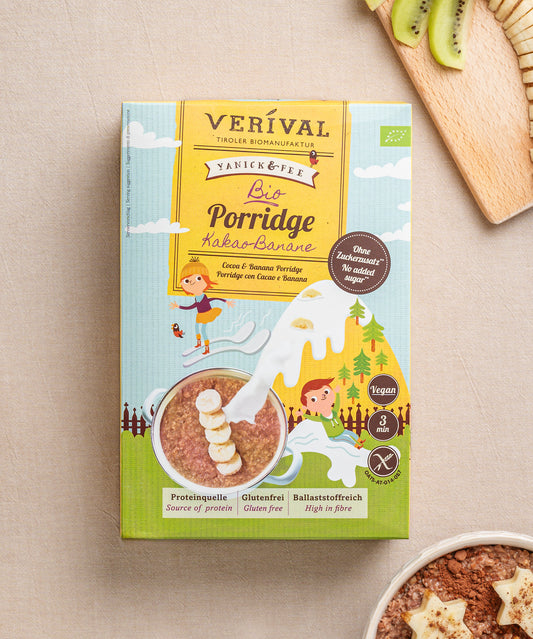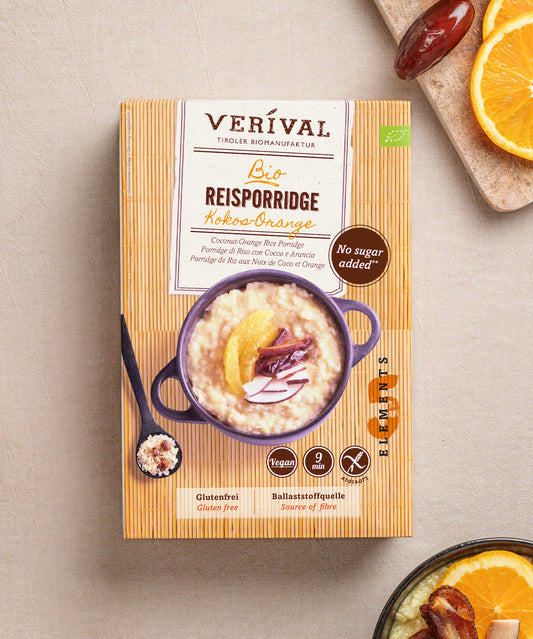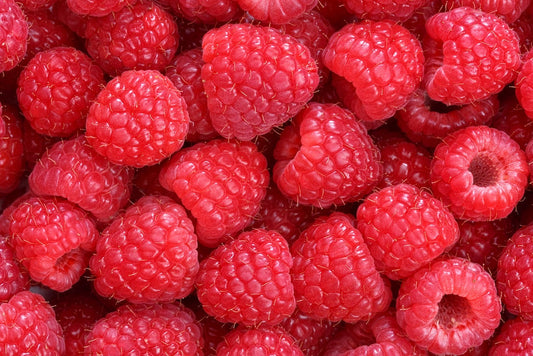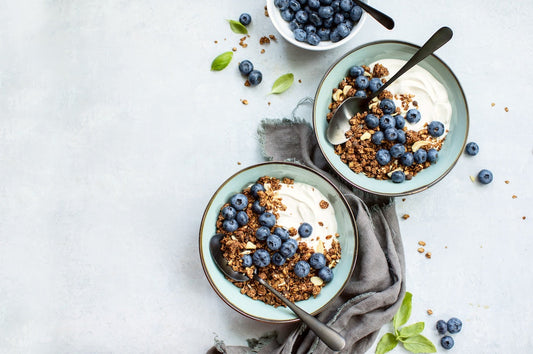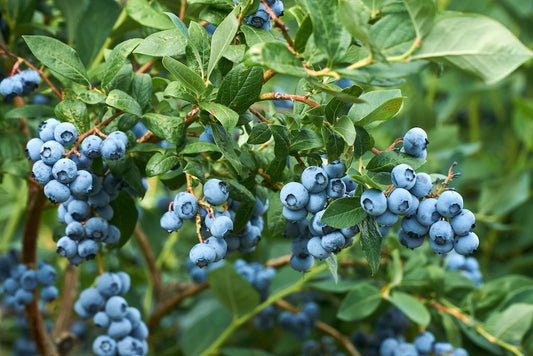Soluble fiber plays an important role in our diet. It can help regulate blood sugar and cholesterol levels, increase satiety and even reduce the risk of certain diseases.
Dietary fiber is a complex (mostly indigestible) carbohydrate that occurs naturally in plant cells. That is why they are also referred to as fibrous substances or plant fibers. The health benefits of dietary fiber are wide-ranging – from aiding digestion to preventing heart disease.
This article provides a comprehensive overview of soluble fiber, its health benefits, and its role in a balanced and healthy diet.
Dietary fiber – read more about high-fiber nutrition
What are dietary fibers in general?
Dietary fibers are indigestible food components that are found mainly in plant-based foods. They are important for digestion as they stimulate intestinal motility and increase stool volume. Dietary fibers cannot be broken down and absorbed by the body – they pass through the digestive tract almost unchanged.
Difference between soluble and insoluble fiber
There are two main types of dietary fiber: soluble and insoluble. The main difference between these two types is their interaction with water and their effect on the body.
Although both types of fiber are important for our health and digestion, soluble and insoluble fiber have different properties and functions in the body.
Soluble fiber
Soluble fiber, sometimes referred to as water-soluble fiber, is fiber that can dissolve in water. When in contact with liquid, it swells and forms a gel-like substance. This property allows soluble fiber to soften stools.
They are fermented by the gut bacteria, and in the process, they can produce substances that are beneficial for gut health. In addition, soluble fiber can help stabilize blood sugar levels and lower cholesterol.
Insoluble fiber
Insoluble fiber, or water-insoluble fiber, cannot dissolve in water and maintains its shape during digestion. It essentially acts as a “brush” in the digestive tract by helping to bulk up stools and speed up intestinal transit. This makes it particularly helpful in preventing or treating constipation.
It is important to include both types of fiber in your diet to support overall digestion and health. In the following sections, we will focus specifically on soluble fiber, its properties, health benefits, and which foods are particularly high in soluble fiber.
The effect of soluble fiber
Pectins, inulin and mucilages and gums are soluble fibers. They are also referred to as swelling agents, as they store large amounts of water and swell in the intestine. This results in gel-like compounds that are largely broken down in the large intestine.
Soluble fibers help to keep your bowel movements regular and flush out toxins. Some soluble fibers are also prebiotics, which means they serve as “food” for positive intestinal bacteria, thus contributing to healthy gut flora and helping to build a healthy gut flora .
Build gut flora – find out more!
Absorption and digestion of soluble fibers
Soluble fiber has a unique effect on our digestive tract. When it comes into contact with water, it swells and forms a gel-like substance. This property changes the consistency of the food bolus and digestion by slowing the transit of food through the stomach and small intestine.
As soluble fiber binds water in the gut, it helps to make stools softer and bulkier. This facilitates bowel movement and promotes regular and healthy bowel movements. Thus, eating foods high in soluble fiber can help prevent or relieve constipation.
Furthermore, soluble fibers have the ability to be fermented, meaning that they can be broken down by the gut bacteria in the large intestine. This fermentation process produces short-chain fatty acids, which can have numerous health benefits, including supporting gut health and reducing the risk of inflammatory bowel disease.
Effect of soluble fiber on gut flora
Another notable property of soluble fiber is its positive effect on our gut flora. The gut flora, also known as the microbiome, consists of trillions of bacteria and other microorganisms that live in our intestines. These bacteria play a crucial role in our health, including digestion, immune system and even mood.
Soluble fibers can act as prebiotics, meaning they serve as a food source for the beneficial bacteria in our gut. When soluble fibers are fermented by gut bacteria, short-chain fatty acids are produced. These substances are not only good for digestive health, they also have positive effects on gut health by strengthening the intestinal mucosa and promoting the growth of good intestinal bacteria.
Soluble fiber and its effect on satiety
Soluble fiber can also help increase satiety. Due to their ability to bind water and swell, they increase the volume of the bolus in the stomach. This can help you feel fuller for longer and can help you control your food intake, which can be especially helpful if you are trying to lose weight or maintain a healthy weight.
In addition, soluble fiber slows gastric emptying, which means that food stays in the stomach longer, prolonging the feeling of satiety. This also helps to stabilize blood sugar levels after meals, so you don't feel hungry again straight away. In particular, cravings can be avoided.
Including high-fiber foods in your diet that are rich in soluble fiber can also be an effective way to maintain or achieve a healthy body weight.
Preventing constipation with soluble fiber
Soluble fiber can play an important role in preventing digestive problems such as constipation. As mentioned earlier, soluble fiber swells when it comes into contact with water, forming a gel-like substance.
This ability helps to soften and bulk up stools, facilitating bowel movement and regular, healthy bowel movements. This is especially important for people who struggle with constipation or other digestive disorders.
Maintaining adequate hydration is essential to preventing constipation. Thus, an increased intake of soluble fiber, together with adequate fluid intake, can help to reduce the risk of hemorrhoids and other associated digestive issues. Drinking plenty of water is therefore also an important factor for a well-functioning digestive system.
Fiber for a healthy gut
Effects on cholesterol levels
One of the most notable health-promoting properties of soluble fiber is its ability to lower cholesterol levels. It does this by binding to bile acids in the gut that are made from cholesterol. By binding to the bile acids, soluble fiber prevents them from being reabsorbed into the body. Instead, they are excreted as part of the stool.
This mechanism forces the body to use more cholesterol to produce new bile acids, which ultimately causes the total blood cholesterol level to decrease. Therefore, soluble fiber can play an important role in lowering “bad” LDL cholesterol and preventing heart disease.
Effects on blood sugar levels
Soluble fibers also have a positive effect on blood sugar levels. Due to their swelling property and gel-like consistency, they can slow down the absorption of sugar into the bloodstream. This can lead to blood sugar levels rising less sharply after a meal and remaining more stable overall.
This property makes soluble fiber particularly valuable for people with type 2 diabetes or those at increased risk of developing the condition. A diet high in soluble fiber can help control blood sugar levels and reduce the risk of complications associated with diabetes.
Preventing heart disease
As mentioned earlier, soluble fiber can help lower cholesterol levels. Reducing the “bad” LDL cholesterol in the blood helps keep arteries healthy and reduces the risk of heart disease. In addition, soluble fiber can also help lower blood pressure, another important factor for heart health.
So a diet rich in soluble fiber can help reduce the risk of heart disease and contribute to overall heart health.
Preventing colorectal cancer
Soluble fiber can help to reduce the risk of developing colorectal cancer. The exact mechanisms are not yet fully understood, but it is assumed that some dietary fibers can shorten the transit time of food through the intestines, which means that potentially carcinogenic substances have less time to come into contact with the intestinal mucosa.
The short-chain fatty acids produced when fiber ferments in the gut may have anti-inflammatory properties and help keep gut cells healthy, which in turn may help reduce the risk of bowel cancer.
Healthy breakfast for good gut flora
What foods are high in soluble fiber?
Legumes and vegetables
There are many foods that are a good source of soluble fiber, and these include, in particular, legumes and certain vegetables. Legumes, such as lentils, beans and peas, are high in soluble fiber and can make a valuable contribution to your fiber intake. They are also an excellent source of protein and other nutrients, and can be a healthy and nutritious addition to any meal.
Certain vegetables, such as Jerusalem artichokes and artichokes, contain high amounts of inulin, a type of soluble fiber. Other vegetables, such as carrots, broccoli or sweet potatoes, are also good sources of soluble fiber. It is therefore advisable to include a variety of vegetables.
Cereals and cereal products
Grains and grain products are an important source of soluble fiber, especially when they are whole grains. Whole grains contain the entire kernel, including the germ, which is rich in nutrients, and the fiber hull, which contains important soluble fiber.
Whole grain bread is a good choice if you want to increase your intake of soluble fiber. It contains a higher proportion of fiber than white bread or refined grain products. Oats are another excellent source of soluble fiber. They contain a fiber called beta-glucan, which has a positive effect on heart health. Oats are versatile and serve as a valuable basis for a nutritious breakfast – for example with an organic porridge from Verival.
Other whole grain products such as whole wheat pasta or wheat bran can also contribute to a high-fiber diet. It is important to read labels and look for products that are made from whole grains to ensure you get the full benefits of soluble fiber.
Oats as a healthy breakfast
Other high-fiber foods
In addition to legumes, vegetables and grains, there are other foods that can serve as a source of fiber.
Inulin is a soluble fiber found in many plant-based foods. It is often used as a natural additive because it can improve the texture of food and act as a prebiotic for the intestinal flora. Pectin is another soluble fiber found mainly in fruits such as apples, berries, and citrus fruits. It helps to form a gel and can be used as a thickening agent in jams and jellies.
Flaxseeds are a good source of soluble fiber, especially of a fiber called alpha-linolenic acid. You can add them to muesli, smoothies or yoghurt to increase the fiber content of the meal. Psyllium husks are also rich in soluble fiber and can be consumed as a thickening agent in baked goods or as a dietary supplement.
Plums are not only delicious, but also rich in fiber, especially soluble fiber. They can be eaten fresh or processed into prunes to increase the fiber content. Bran, cellulose and hemicellulose are other soluble fibers found in various foods, including whole grains, fruits and vegetables.
Soluble fiber can be found in foods such as oats, chia seeds, peas, beans, apples, citrus fruits, carrots, bananas and barley. It is particularly abundant in unripe fruits, cores and skins of apples, quinces and berries, as well as in chicory, Jerusalem artichoke, garlic, artichokes, algae and juices of tropical plants. Are bananas healthy?
High-fiber breakfast - discover more
Dietary fiber in the diet - What does a high-fiber diet look like?
A high-fiber diet plays a crucial role in our health and well-being. They offer numerous benefits for digestion, heart health and overall health.
Dietary fiber helps to promote digestion and prevent constipation by increasing stool volume and supporting intestinal motility. It also helps to increase satiety, which helps us to maintain or achieve a healthy body weight. In addition, dietary fiber can help lower cholesterol and reduce the risk of heart disease.
A high-fiber diet should include a variety of high-fiber foods. These include legumes, vegetables, grain products such as wholemeal bread and oats, as well as other high-fiber foods such as flaxseed, psyllium husks and prunes. By including these fiber sources in your diet, you can ensure that you are getting enough fiber.
The German Nutrition Society recommends a daily intake of at least 30 grams of fiber for adults. You should definitely get close to this value with a balanced diet. With products from Verival, this is made very easy for you.
High-fibre nutrition – read more
The importance of fibre for a healthy diet
Dietary fiber helps to maintain good digestion, promote gut health and prevent diseases. It also supports healthy weight management and can reduce the risk of heart disease and some cancers.
To benefit from these advantages, you should incorporate high-fiber foods into your diet. Include more fruits, vegetables, whole grains, legumes, nuts, and seeds in your meals. These plant-based foods are natural sources of fiber while also providing a variety of nutrients, vitamins, and minerals.
Tips for increasing your fiber intake
So, if you want to increase your fiber intake, there are some practical tips you can follow:
- Start slowly and gradually increase the amount of high-fiber foods in your diet. Gradually increasing your fiber intake allows your body to adjust to the changes and avoid possible digestive issues.
- Drink enough water to support the fiber and facilitate digestion.
- It is also important to reduce low-fiber foods, which are often processed. Examples of low-fiber foods are refined grain products, sugary snacks, and highly processed foods. Read the nutrition information on food labels to check the fiber content and choose high-fiber alternatives.
The German Nutrition Society recommends a high-fiber diet with a daily fiber intake of at least 30 grams for adults. Individual needs can vary (according to age, gender, activity, etc.), so it is important to keep an eye on your own daily requirements. Here are a few high-fiber recipes that you can incorporate into your healthy diet.
Discover high-fiber recipes for a healthy diet.
Conclusion
Soluble dietary fiber plays an important role in our health and its beneficial properties must be taken into account in a good diet. It aids healthy digestion, promotes a feeling of satiety, helps prevent constipation and contributes to lowering cholesterol levels.
By eating high-fiber foods such as legumes, vegetables, whole grains, and other sources, we can meet our fiber needs and take advantage of the many health benefits. A conscious intake of fiber should be part of a balanced diet to optimally care for your body!
FAQ's about soluble fiber:
What are the best high-fiber foods?
The best high-fiber foods are legumes (such as beans, lentils, and chickpeas), vegetables (such as broccoli, carrots, and spinach), whole grains (such as oatmeal, whole wheat bread, and whole wheat pasta), as well as nuts, seeds, and berries. These foods contain a good amount of fiber and can be easily integrated into your daily diet.
How much fiber should I consume daily?
The German Nutrition Society recommends a daily fiber intake of at least 30 grams for adults. It is important to have a balanced diet rich in fiber-rich foods to reach this recommended value.
How do soluble fibers affect blood sugar levels?
Soluble fiber can help regulate blood sugar levels. It slows the absorption of glucose into the bloodstream, which results in a slower rise in blood sugar levels after meals. This can be especially beneficial for people with diabetes or those who want to control their blood sugar levels.
Are there any risks or side effects associated with soluble fiber?
In general, soluble fiber is safe and well tolerated. However, a sudden increase in fiber intake can cause bloating, abdominal cramps or diarrhea. It is important to increase your fiber intake gradually and to drink enough fluids to minimize possible side effects. For people with certain health conditions or taking certain medications, it may be advisable to consult a doctor or nutritionist beforehand.
Which foods contain soluble fiber?
Soluble fiber is found mainly in foods such as oats, peas, beans, apples, citrus fruits, carrots and barley. They are also found in unripe fruits, cores and skins of apples, quinces and berries, as well as in chicory, Jerusalem artichoke, garlic, artichokes, algae, flax seeds, plums and juices of tropical plants.

